
Energy efficiency in historic buildings
Welcome to Energy efficiency in historic buildings: The Energy Efficiency Podcast, episode 3, the podcast that brings you a mix of energy efficiency news, products and tips all year round. We’re interested in profiling people and products involved in promoting energy efficiency habits, products and information, so please do get in touch if you have something to contribute.
This week: energy efficiency works to historic buildings, energy efficiency across the world and sustainability in the construction industry.
Net zero carbon emissions
Before we get on with our advertised features, this week Theresa May, outgoing British PM, has put into law what is seen as her legacy: a commitment that Britain will achieve net zero carbon emissions by 2050, which would make Britain the first major economy to enact such legislation. Small countries including Finland and Norway are aiming for earlier dates – 2035 and 2030 respectively. What does May’s move mean for the UK, how likely is it to be achieved, and how is it likely to be achieved?
Although the move is broadly welcomed, Greenpeace was critical of the carbon credits element of the proposed legislation, which is in the form of an amendment to the Climate Change Act. As a statutory instrument it doesn’t go to a vote of MPs. This is significant because among other criticisms the chancellor Philip Hammond claimed the move would cost £1tn and would lead to spending cuts.
CCC
The 2050 date was the recommendation of the official UK Committee on Climate Change (CCC), but May’s proposed use of carbon credits goes directly against the advice of CCC chairman John Gummer. What are carbon credits? According to Investopedia:
“A carbon credit is fundamentally a permit—issued by a government or other regulatory body—that allows its holder to burn a specified amount of hydrocarbon fuel over a specified period. Each carbon credit is valued against one ton of hydrocarbon fuel. Companies or nations are allotted a certain number of credits and may trade them to help balance total worldwide emissions. “Since carbon dioxide is the principal greenhouse gas,” the United Nations notes, “people speak simply of trading in carbon.”
Carbon trading
It’s felt by many that carbon trading places pressure on developing nations. Doug Parr, chief scientist for Greenpeace UK, describes carbon offsetting as “shifting the burden to developing countries” and goes on to describe it as having a history of failure.
Just as the renewables industry we talking about in episode 1, which will be a major plank of net zero, achieving this target requires the correct investment and infrastructure. An article in the Independent suggests that meeting the target will mean
“an end to heating of homes with traditional gas boilers, more green electricity, and a switch from petrol and diesel cars to electric vehicles, walking and cycling.”
With the exception of mothballing gas boilers, none of these are revolutionary moves but none the less May has firmly parked responsibility for the detail as something to be dealt with by future governments, criticised by some as lack of a detailed plan. Whatever your politics, it seems reasonable to allow for accommodating developments in technology. We struggle to predict economic conditions five years ahead at the moment, so to put together a detailed plan to achieve a target that is 30 years away would seem a grand waste of time for all involved. It’s expected the move will receive broad parliamentary support, so we’ll report back on what happened next.
Energy efficiency in historic buildings

Energy efficiency in historic buildings is far from straightforward. Historic buildings, from medieval castles to interwar housing blocks, have a tendency to look pretty (yes, even interwar housing blocks have their fans) but be hard work to live in. They can be dark, draughty, very high-ceilinged and so hard to heat, leaky, and hard to update without upsetting what is sometimes fragile or unpredictable infrastructure.
Setting out on a relatively small project such as replacing a bathroom, stripping a floor or fixing a roof can reveal layer upon layer, even century upon century, of fixes, bodged jobs and worn out materials. Improving energy efficiency in historic buildings needs to be approached with extreme caution, an open-mind and ideally bottomless pockets.
Construction
Any older building will have been constructed at a time of different priorities, technologies and materials. For instance, early C20th housing was built when coal was an abundant and fairly cheap heating material that no-one though twice about using. The Clean Air Act was a long way off.
This means walls were barely insulated if at all, making those early C20th homes – still routinely in occupation – hard to heat. They are woefully lacking in insulation by modern standards. Wooden window frames, a feature of the vast majority of older housing, have a tendency to rot, shrink and swell. In some houses roofing timbers and floorboards will have warped over time, making it very difficult to achieve a draughtproof fit for windows and doors. Floors often have noticeable gaps between the boards which allow draughts to whistle up if not filled in.
Modern standards
Once upon a time this was considered inevitable, but in the C21st we can go a long way to removing these discomforts. The art is in ensuring houses are brought up to modern standards of comfort while understanding and respecting the building. We don’t want to interfere with its ability to keep standing happily for decades or centuries to come. In other words, approach wrongly, energy efficiency in historic buildings can cause more harm than good.
Listed buildings
When considering works to an older house, first consider whether the house is listed. A listed building comes with a set of criteria unique to that building. As well as three grades of listing, each listed building has its own assessment and features of note. Before doing much more than banging a nail into a wall, it’s important to know the details of your building’s listing entry. You need to understand what it means for the works you propose. If you suspect or know listed building consent is required, this is something you must seek before starting works. A huge amount of information is available online from heritage organisations, government and industry bodies.
Historic England has produced a PDF booklet Energy Efficiency and Historic Buildings How to Improve Energy Efficiency which does exactly what it says on the tin. It includes useful diagrams and graphics, some including charming little characters in historic dress just to make the point. I could quote the whole thing here as it’s fascinating. Here is a brief quote which sets out why it’s so important to understand what you’re dealing with when planning to improve energy efficiency in historic buildings:
“Getting the balance right (and avoiding unintended consequences) is best done with a holistic approach that uses an understanding of a building, its context, its significance, and all the factors affecting energy use as the starting point for devising an energy-efficiency strategy. This ‘whole building approach’ ensures that energy-efficiency measures are suitable, robust, well integrated, properly coordinated and sustainable.”
Pitfalls
The pitfalls of work to upgrade energy efficiency in historic buildings are easy to fall into. My background is in historic buildings preservation and I hear a fair bit about various projects. Recently I heard about a well-meant draughtproofing scheme to a listed late Georgian house (that’s the 1820s). It involved sealing around the edges of windows with foam, with no understanding of how air movement worked in that room. Within a short time condensation was forming and the room was becoming unpleasant to be in. Draughty windows can make a room uncomfortable too, but in this instance the work needed to be done against a backdrop of understanding airflow in the room and ensuring a healthy flow was maintained.
To quote Historic England again:
“traditional forms of building construction take up moisture from their surroundings and release it according to environmental conditions. Buildings of traditional construction also tend to have greater thermal inertia than their modern counterparts – they heat up and cool down more slowly. This ability to ‘buffer’ moisture and heat helps to even out fluctuations in humidity and temperature.”
In another instance a building of a similar age had an insulating cladding applied to the entire exterior. Apart from its clanging appearance, the brick and stone underneath could no longer breathe and mould began to appear on the walls. There was no option to remove the cladding, and as this was done to a privately rented house the occupants just have to wipe the mould away every so often. The aim of this work was to improve warmth retention in a hard-to-heat house, but it has had little effect. This is the same situation again – well-intentioned works carried out in the absence of an understanding of how a building’s fabric behaves. We’ll look in a future episode at the rights tenants have to request energy efficiency measures be implemented on their homes.
The Historic England PDF makes the very good point that building owners and occupiers should be involved in planning work to improve energy efficiency in historic buildings. Human beings are creatures of habit, so if works involve change to service delivery within a building – a different heating system for example – the people occupying the building have to understand what they might need to do differently. Although not a historic building, we did hear about a hi-tech building in Westminster that was designed to be very low-energy through the use of clever systems. Unfortunately no-one involved the building’s caretaker, who continued among other things to leave windows open as he always had, thereby defeating much of the energy saving intention.
Works
So what type of work is typically carried out to improve the energy efficiency of a historic building? Historic England makes the fair point that just as in any building, equipment and habit changes can improve matters before the fabric of the building has been touched. A 200 year old building doesn’t need antiquated appliances unless it’s a National Trust kitchen. Pretty much all the usual energy efficiency habits apply just as well in an older building.
Beyond that, the main areas to consider for assessment and improvement are building design and alterations (and understand how it was originally meant to be heated, cooled and used), building fabric, heating, cooling, ventilation, lighting, hot water and appliances.
Low-energy measures
HE advises, very sensibly, starting with low-energy measures to remove sources of discomfort: draughtproofing in a way that works with the flow of air in the building, using curtains in front of doors to block draughts, putting rugs over draughty floorboards. Apply suitably ventilated loft insulation, make any necessary repairs to walls and rooves to avoid unwanted air and water ingress, fit curtains and/or shutters to all windows (this helps to block overheating in the summer too).
In its amber category – involves some risk and/or cost and may not be suitable for all buildings – HE includes:
fitting panelling, secondary glazing, carpets and awnings
reinstatement of a ceiling that has been removed at some point
more involved work to insulate pitched and flat rooves
reinstating or mending rendering and plasterwork, critically using only permeable materials
HE’s red category is for high risk and/or high cost options. These include complex roof-insulating measures, internal and external wall insulation including cavity walls and timber-framed construction, works to floors and the controversial window and glass replacement option.
Windows are a controversial element of improving energy efficiency in historic buildings. Traditional glass does much to bring together the aesthetic of a building. A historic building with modern metal-framed units is visually grating, but of course a lot more comfortable for the occupants than draughty single-glazing in rotting timber frames. HE makes the point that early glass is a heritage asset to be retained. This is always going to be a tricky area.
Case studies
The PDF ends with a set of resources for advice including a link to the energy efficiency area of its website and links to numerous specialist publications with titles such as:
Research into the thermal performance of traditional brick walls
The engine house, swindon, wiltshire: thermal performance of energy efficiency improvements to timber windows
and
a bristolian’s guide to solid wall insulation
Our favourite Energy Saving Trust has also produced guidance in this area. It’s issued a PDF of case studies of works to improve or in some cases introduce energy efficiency in historic buildings. They include Mill Farm at Assington in Suffolk, a grade II listed farmhouse. The introduction to this case study makes the vital point:
“Modern construction is designed to keep moisture out completely. Old buildings deal with moisture in a different way: historic construction methods allow a certain amount of moisture in, but the permeability and porosity of the materials (see above) allow moisture to evaporate without damage.”
This timber-framed and rendered farmhouse underwent extensive renovation work including renewing and increasing the thickness of thatch, fitting sheep’s wool insulation to walls and replacing a damp concrete floor with breathable lime concrete with clay granules. Additional work was carried out to farmyard buildings focussing on insulation, traditional materials and methods, and features such as a composting toilet.
In all, six case studies are included in the PDF, covering a range of types and ages of buildings, a variety of UK locations and all sorts of considerations. There will be a link to this PDF in the show notes, and whether you’re considering works or not, it makes a fascinating read.
Energy efficiency Worldwide
What’s happening globally to encourage and facilitate energy efficiency? This is a hot topic – literally. According to the International Energy Agency – the IEA – global energy demand rose by 1.9% in 2017 – the fastest annual increase since 2010. This economy-led demand outpaced energy efficiency improvements.
So what’s going on to improve the situation? There’s obviously no simple or short answer to that. The issue is many-faceted, has cultural obstacles, is affected by vast disparities in GDP and has to be a priority for any given administration. What we’ll do here is present a few good news stories.
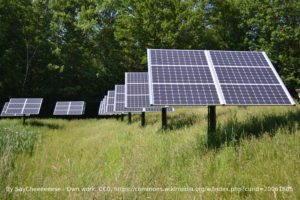
There are renewable energy initiatives from private firms worldwide, from the mini grid systems popping up in Africa to plans in Sicily and Sardinia for plants turning solar power into both electricity and thermal energy. Energy efficiency measures at national level will be driven by governments around the world. The trick in the developing world in particular is achieving this without negatively affecting economic growth. In more developed industrial nations, for instance Germany, energy efficiency in energy-intensive sectors can deliver cost advantages.
Data centres
Data centres are particular energy offenders. Ranks of servers generate a lot of heat. It needs to be continually whisked away so that the units don’t overheat. Finding a way to keep this at optimum while minimising energy use is a challenge that has been met by the Telia Helsinki Data Center in Finland. It has been awarded the LEED – Leadership in Energy and Environmental Design – environmental gold rating, and has the highest environmental score of all LEED-certified data centres.
Telia’s award came from its particular focus on energy efficiency and water savings. Rainwater is collected and used as rinsing water, significantly reducing water consumption. The data centre uses renewable energy, and then heats up to 20,000 homes with the heat it produces.
Staying in Finland, a data centre owned by Russian internet giant Yandex, located in Mantsala in Finland, is using the heat it generates to heat the district’s water. The data centre’s manager Ari Kurvi comments that “there’s a very solid business case behind it,”, which is essential for these moves to be adopted and maintained. Using this heat, Mantsala has reduced heating costs and reduced emissions by an impressive 40%. As a whole, the data centre reuses 31% of the energy it draws, with a next phase ready to implement which will increase that reuse to 60%.
Review
It’s great to see that not only are companies adopting energy efficiency measures but they’re reviewing how to improve them and increase that efficiency. In this situation, a saving for Yandex is a benefit for Mantsala, which will bolster good relations between the data centre and its neighbours. A sector which is projected to consume up to 1/5 of global electricity by 2025 needs all the good PR it can get.
Food production
Food production is another energy-intensive area and very much under the spotlight at the moment. Every country in the world is forced to reconsider how it will feed its population at an affordable price without obliterating wildlife and polluting the environment. Studies on OECD countries suggest that the food system accounts for 20% of total energy use in some. This covers activies from farming to producing processed foods, and includes wastage. An OECD publication from the Joint Working Party on Agriculture and the Environment, titled IMPROVING ENERGY EFFICIENCY IN THE AGRO-FOOD CHAIN, highlights that there are numerous areas for improving energy efficiency but that identifying these requires further research.
US farms
An article on the US website Farm Energy states that “U.S. farms have almost doubled their average energy efficiency over the past 25 years” but that there are still many opportunities to improve this. This includes simple and obvious actions applicable worldwide such as maintaining equipment so that it works at optimum efficiency, through investing in more energy efficient equipment, improving building standards and using nutrient supplements for livestock more efficiently.
In December 2018, funding for a renewable energy program was included in the Farm Bill that was signed into US law. The Department of Agriculture’s renewable energy grant and loan programs are pulled together under an initiative called REAP for Rural Energy for America Program. It makes sense to bundle renewable energy legislation with bills relating to agriculture as agriculture is so energy intensive. When Barack Obama was in office REAP laid the groundwork for dealing with the carbon footprint of US agriculture as well as promoting rural economic development by supporting clean power projects, including solar-powered grain dryers.
The Americal legislators view this new move as being as much about America’s energy independence as anything else, and using less energy clearly helps here. Power generation projects eligible for REAP funding include biomass heating, geothermal, lower wattage hydropower, hydrogen and wind and solar generation. Energy efficiency upgrades include energy efficient HVAC systems, insulation, lighting, refrigeration, pumps for sprinklers, switching from diesel to electric irrigation motors and crucially replacing energy-inefficient equipment.
Iowa in particular looks to have benefitted from REAP funding. Grants and loans were used to fund solar arrays, refrigeration units and low-energy lighting. Lighting comes up again and again as a huge drain on power.
Food waste
Pleasingly, the USDA funds research aimed at cutting costs and improving energy efficiency, not just capital projects. As well as research into biofuels – not an uncontroversial topic – it’s also tackling food waste. Wasted food wastes every iota of energy and work that has gone into producing it.
Currently the USDA and California Department of Agriculture are funding a project to dry the nutrient-rich waste from fruit and veg processing – skins, seeds, stems and so on. Being wet it doesn’t have a long life and though some of it can be used, most ends up in landfill. The crunch is to find an economical way of drying this matter, known as pomace, without using fossil fuels. The aim is to use 100% solar power and experiments using it to dry tomato and prune pomace are going well. Companies are interested in getting involved. Ultimately, improving energy efficiency in food production is going to be achieved through combining these quite focussed projects with broad energy efficiency measures focussing on infrastructure.
Japan
Japan is in the contradictory position of being one of the highest importers of fossil fuels in the world but one of the most advanced in renewable energy research. Japan has a 94% reliance on imported fuels and is always in the top few countries for quantities of gas, coal and oil imports. Its island nature in the Pacific Ring of Fire puts it in a unique position for such a developed economy and has made it the world’s third biggest power producer with huge per capita power consumption. In 2016 82% of power was generated by conventional fossil fuel-based methods, albeit its coal plants are considered to be the most efficient in the world.
Since the earthquake and tsunami in 2011 this profile has been compounded by altered attitudes to nuclear power, including a complete switch off of its nuclear generators (some since re-opened). It has increased Japan’s need to find new sources of energy. To meet its pledge as a signatory of the Paris Agreement, it needs to reduce greenhouse emissions by a quarter by 2030, and increase the share of renewable energy in the mix to about the same. However, Japan also plans to build more coal-fired plants, so what exactly is going on?
According to polls, climate change is taken seriously by about half of the Japanese population, but the country is coming in for severe criticism over its plans for coal burning plants. Its own foreign ministry’s official advisory panel on climate change has pointed out that failing to move towards decarbonisation could see Japan being left behind economically. Even its own targets are well below other developed countries. However, it is implementing energy efficiency measures and it shoiuld be noted that Japan’s population is falling. This means fewer people to consume power, but also that per capita emission statistics won’t look good.
Nuclear
Despite its vulnerability to earthquakes, Japan has included a 20% share of nuclear energy in its most recent basic energy plan and views it as an important electricity source. Together with its plan for renewables, it makes a 44% zero-emission electricity share and refers to renewables as “major electrcity sources”. It’s less than many people wanted but it is progress of sorts.

So what is happening to promote energy efficiency in Japan? There are plans to have 40,000 hydrogen vehicles on the road by 2020. It has promoted the use of electric cars through subsidies. There are big plans to improve the energy efficiency of buildings through a complete switch to LED lighting and installation of fuel cells in homes, with electric or fuel cell vehicles making up at least half of all new sales in about ten years from now.
Japan has a law on the “rational use of energy”, brought in in 1979 in response to the oil crisis. In aims to promote energy efficiency across the board, including in transport and industry. There are now mandatory regulations on energy efficiency standards in large buildings, together with ambitious plans to reduce energy consumotion of new homes and buildings to zero in the next decade.
Thanks to Jocelyn Timperley’s article at carbonbrief.org for the background to this feature.
Sustainability in the construction industry
If a building is standing but is not energy efficient, what is the most energy efficient approach? Is it to acknowledge the materials and energy that have gone into building it and leave it be? To do what works you can? Or to raze it and start again? Sometimes the answer’s obvious, sometimes it’s not, but it can be helped along by considering the sustainability of any proposed works.
Looking at a building as if it was made of Lego, could these bricks be reused? Just because they have been used in an energy-inefficient configuration in one building doesn’t mean they can’t be re-used in a different and much more energy efficient building. Even using them in a regular building reuses the energy and work that has gone into making them. Roof tiles, timbers, steel joists and all sorts of other elements of a building can be re-used. It takes commitment and planning on the part of the developer but it brings rewards.
Glasgow Queen Street station

Glasgow Queen Street station, first opened in 1842, has been undergoing redevelopment for a wee while, extending platforms, providing fully accessible entrances, expanding the concourse and providing new facilities. It’s easy to imagine this will see innumerable skips filled with smashed up materials ready for dumping, and the previous modernisation in the late 60s/early 70s saw just this, together with demolition of Victorian station buildings. Much was to change in Glasgow’s attitude to its built heritage but we mustn’t get carried away on that just now.
Curiously, NetworkRail’s web page on the work doesn’t mention the recycling and reuse that is going on. You have to look quite hard to find the details. There is a Twitter account dedicated to covering the work, @NetworkRailGQS, which feeds us bits and pieces of information. On June 5th this year they tweeted under the hashtag #WorldEnvironmentDay:
“In total, 14,000tn of redundant material from #GQS has been reused by a range of sectors including housing and road projects, as well as the bio-mass industry.” and “Some of the concrete removed was also crushed into small stone and then re-used as part of the base layer for the new station”.
According to their Twitter feed “More than 95% of demolition material has been recycled and 100% of the brick, timber & concrete removed from site re-used elsewhere in the construction industry” – 100%! This project could stand as an example of what can be achieved. These impressive figures were covered in an article in Scottish Nationalist paper The National earlier this month, where it was pointed out that:
“The team also significantly reduced the carbon footprint of the demolition works by carrying out the recycling work within Glasgow.” and the only materials not recycled were hazardous ones such as asbestos. Achieving this within the constraints of working in a city centre location is an achieved to be proud of.
Alstom, Birmingham
At another rail site, the former home of train maker Alstom in Birmingham, 11 hectares is being cleared as part of HS2. Setting aside the merits or otherwise of demolishing a piece of the UK’s railway history, 413,000 tonnes of material has been created during the demolition. Contractors plan to reuse most of it on site.
This is major sorting job, which is carried out on site, splitting out plastic, glass, cement, timber, and insulation materials. Aggregate is crushed and left on-site for road and grounds use. Plywood has been put to a range of imaginative uses including foot scrpaers, planters and clipboards and well as temporary fencing and lockers. Reusing reclaimed materials for temporary structures makes particular sense. An article on website theconstructionindex.co.uk goes into detail about all the considerations of this type of work, including managing heavy plant over subterranean voids, hazardous materials and the different methodologies required. To date, 8000 tonnes of brick have been extracted as well as 4000 tonnes of metal and 1 1/2 of timber.
Circular economy
Despite the good work at Glasgow Queen Street, construction is the largest consumer of natural resources in Scotland and the biggest contributor of waste going to landfill. A new partnership between Zero Waste Scotland and Construction Scotland Innovation Centre is on a mission to demonstrate to the construction industry that a ‘circular economy’ approach where nothing is wasted can offer commercial advantages. The partnership is putting on a programme of events, including:
a series of joint events to promote innovative ‘reuse, recycling and circular thinking’ initiatives within construction;
issuing ‘innovation calls’ to generate innovation projects around waste reduction and reuse themes;
collaborating on further sector-wide strategic projects.
Upcycling
In Hong Kong the focus is on materials ancillary to construction, in this case bamboo scaffolding. It’s a common sight in Hong Kong and tends to end up in landfill after use. This year a scheme has been started to upcycle this bamboo. It can be made into furniture and outdoor toys, and workshops run by HK group Green Come True have been showing people how to make small items from the scaffolding, including wind chimes and pen holders. This is intended to protray the upcycling process as fun. Local designers and architects have been invited to use the bamboo creatively and the plan is to continue collecting the bamboo and widening participation in reuse.
There are many such small projects around the world, including a company in Vancouver that ‘deconstructs’ houses and reuses the wood in renovations. Between demand from the bottom up, and legislation and initiatives from the top down, progress is being made, even if it’s a bit lumpy and quite variable across the world
Energy saving product of the week

This week’s energy saving product is something that is rapidly gaining ground in both industry and domestic use: LED lighting. Named for their component light emitting diodes, LED bulbs far outlive incandescent bulbs and are more efficient than fluorescent lighting. Wikipedia puts an LED’s energy use at 10% that of a traditional incandescent lightbulb.
According to lyco.co.uk 20% of the world’s energy use goes into lighting so LEDs are a great energy efficient alternative. They contain no mercury so are less difficult to dispose of. Together with their longer life span they are a more environmentally friendly and energy efficient solution than many forms of lighting.
LED bulbs come in all shapes, sizes and wattages. Some lighting comes fitted with sockets that take only LEDs, but it’s easy to find LEDs with standard bayonet or screw fittings for your existing lamps and light fittings.
We don’t have one specific make of LED to recommend as they are widely available in the shops and online. Next time you need to replace a bulb, look for an LED alternative.
Richard’s tip of the week
This week’s tip is about keeping a cool airflow through your house in warm weather – if we get any. Open a downstairs window on the shaded side of your house and an upstairs window on the sunny side, and fresh air will naturally and continually be drawn in from downstairs to travel up through the house and out through the upstairs window. If you have a vent in a downstairs wall the same thing will happen, if the vent is open. This can help to keep a house cool in warm weather. Fingers crossed.
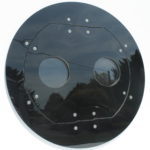 What are we up to? We’re refining our trunking manufacturing and waiting for delivery of our next lot of raw materials. We have several orders with extended trunking to make up in this next batch. If you need a Petflap with longer than usual trunking get in touch with us and we will sort that out for you. Currently we can provide trunking suitable for walls about 60cm thick.
What are we up to? We’re refining our trunking manufacturing and waiting for delivery of our next lot of raw materials. We have several orders with extended trunking to make up in this next batch. If you need a Petflap with longer than usual trunking get in touch with us and we will sort that out for you. Currently we can provide trunking suitable for walls about 60cm thick.
Thank you for listening to another episode of the Energy Efficiency podcast. We will be available through Apple Podcasts very soon. Next week we’ll be looking at the energy efficiency of different types of heating, looking at net zero, and tenants’ rights around energy efficiency works to private rented homes. Please join us then.
“Werq” Kevin MacLeod (incompetech.com)
Licensed under Creative Commons: By Attribution 3.0 License
http://creativecommons.org/licenses/by/3.0/



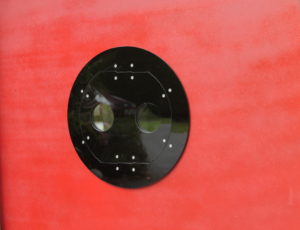
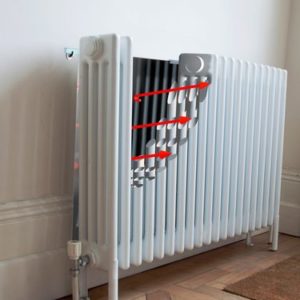 This week’s energy saving product is another simple but effective idea.
This week’s energy saving product is another simple but effective idea. 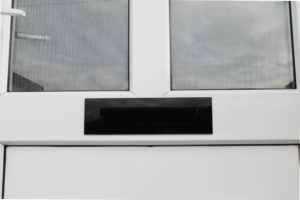
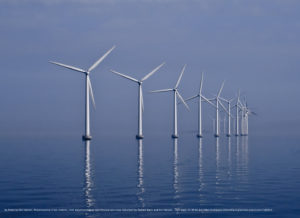
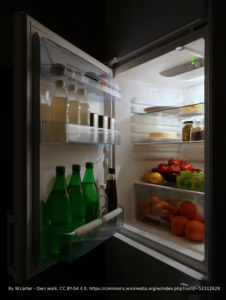
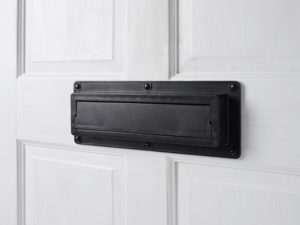
 Answering that last question first,
Answering that last question first, 